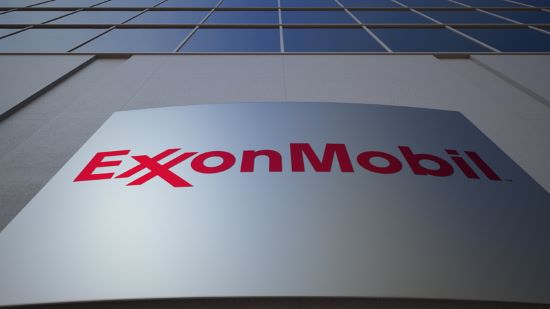ExxonMobil has leased the ground under the seabed off the Texas coast for carbon sequestration. The site is almost 110,000 hectares (271,000 acres) in size and is located off the coast near Galveston. Exxon describes it as a sign of its commitment to carbon capture and sequestration as a solution to mitigate anthropogenic climate change, a subject the company is well versed in since 1982 when its scientists and engineers first linked burning fossil fuels and rising atmospheric temperatures and kept the information under wraps.
Today, ExxonMobil proudly describes how it operates the largest carbon dioxide (CO2) pipeline network in the United States with 69 offshore holdings for sequestration. Its total network length is over 2,000 kilometres (1,300 miles) with the bulk of it located in Louisiana, Texas and Mississippi. The current pipeline network features 15 offshore storage sites and can accommodate 100 million tons of CO2 annually.
In context, this makes ExxonMobil one of the leaders in carbon capture and storage (CCS). Its 2030 emission reduction plan states plans to reduce what it calls “corporate-wide greenhouse gas intensity” by 20 to 30% from 2016 levels. Other objectives include:
- A 40 to 50% greenhouse-gas-intensity reduction for upstream operations.
- A 70 to 80% corporate-wide methane intensity reduction.
- A 60 to 70% corporate-wide flaring intensity reduction.
- Net-zero greenhouse gas emissions from all operating assets by 2050.
Back in 1982, Exxon researchers knew about climate change and greenhouse gas emissions. They published a document describing the CO2 greenhouse effect. It concluded:
- How CO2 atmospheric levels have been rising since the middle of the 19th century and that this would have a deleterious effect on the planet’s climate.
- The doubling of CO2 and other greenhouse gasses in the atmosphere could increase mean global temperatures by as much as 3.1 Celsius (5.5 Fahrenheit) with temperatures at the poles rising by 10 Celsius (18 Fahrenheit).
- That warming would likely not be that noticeable before 1995 when mean atmospheric temperatures would have risen by 0.5 Celsius (0.9 Fahrenheit). After that, the impact would begin to cause noticeable effects.
At the time, Exxon’s corporate management buried the document choosing an information strategy that favoured non-disclosure and a company-wide strategy to cast doubt on anthropogenic climate change should others come up with similar evidence. Corporate management told its public relations teams to emphasize the scientific uncertainty of the estimates should the report see the light of day.
A visit to ExxonMobil’s website today to see the company’s messaging on climate solutions gives you an interesting vibe. The company describes itself as delivering “on both sides” of the energy equation “meeting society’s needs for energy…and reducing emissions.” It highlights $20 billion in investments between 2022 and 2027 to achieve lower emissions for its operations as well as those of other companies with which it deals.
A look at what the company describes as its essential work to advance carbon capture and storage as well as work on hydrogen and lower-emission fuels and you see the following:
- Statements about thousands of Exxon scientists and engineers with more than 1,500 PhDs all focused on the carbon problem from new catalytic and separation materials to improved means of CO2 storage.
- The citing of more than 1,000 peer-reviewed articles and studies published and 10,000 patents filed.
- Collaboration with more than 80 universities globally.
ExxonMobil’s numerous carbon management projects include post-combustion carbon capture, direct air capture (DAC), carbon storage, and fuel cell development. What are the results of this flurry of activity and work? The company claims to have captured and stored more CO2 than its competitors. The total amounts to 120 million tons representing 40% of “all the anthropogenic CO2 that has ever been captured.”
What ExxonMobil doesn’t state is that half of this captured CO2 is sold to other fossil fuel operators to enhance oil recovery from old wells.
What it also doesn’t state is that the company continues to emit far more CO2 than what has been captured. This is data it keeps under wraps.
In recent publications, ExxonMobil has predicted that oil demand and CO2 emissions won’t peak until 2040. The date doesn’t align with the realities of anthropogenic climate change and the rate atmospheric and ocean temperatures have been rising.
How can you reconcile the company’s 120 million tons of CO2 captured against global annual emissions of 37.55 billion tons from all fossil fuel companies? If ExxonMobil is doing the best, what are the rest of them doing?
How do you reconcile Exxon’s spend of between $23 and $25 billion on new oil and gas projects in 2024 and its plans to spend up to $27 billion annually by 2027? How does that compare to the $20 billion in total the company has pledged for emission reductions?
Today, the 100 million barrels of oil produced daily, representing current global demand, puts 31.7 million tons of CO2 into the atmosphere. Now look at ExxonMobil’s CO2 storage efforts to date at 120 million tons. An ovation of one-hand clapping is all the company deserves for having given the planet less than 4 days of climate change mitigation relief.









